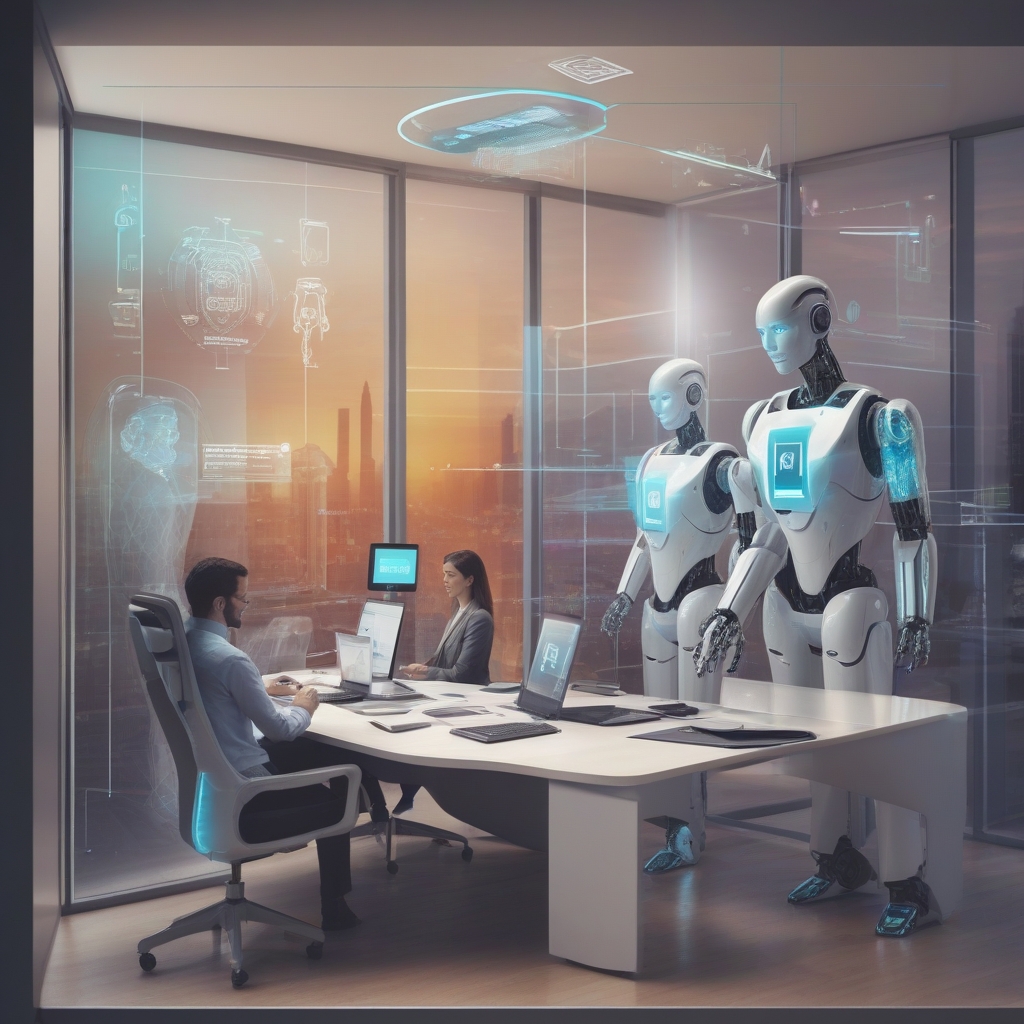Introduction: The Dawn of a New Era in Workplaces
The digital revolution is here, and it’s changing the way we work. At the forefront of this transformation is Artificial Intelligence (AI), a technology that is not just automating repetitive tasks but also enhancing and reinventing job roles. From data analysis to customer support and even creative brainstorming, AI is becoming an integral part of our workplaces. But this is not just about machines taking over jobs; it’s about how humans and AI can co-exist and collaborate to create a more **efficient and productive work environment**.
AI: The Game Changer in Modern Workplaces
AI has delved deep into numerous sectors, making a significant impact across various industries. Here’s how AI is revolutionizing your workplace:
Automation of Routine Tasks
The automation of monotonous and repetitive tasks is one of the most visible impacts of AI. Machines now handle activities such as data entry, scheduling, and sorting through massive amounts of information in no time.
- Reduces Human Error: Algorithms process data with precision and consistency.
- Saves Time: Frees up human resources to focus on more strategic and creative tasks.
Enhanced Data Analysis and Reporting
AI-powered tools can **analyze vast datasets** rapidly, providing businesses with invaluable insights and detailed forecasts:
- Improved Decision-Making: AI produces analytics reports that help in making informed business decisions.
- Personalized Customer Experiences: Companies can tailor their services based on predictive analysis.
Transforming Customer Support
AI is setting new benchmarks in customer support, offering instant, 24/7 assistance through chatbots and virtual assistants.
- Quick Resolutions: Provides immediate solutions to common queries.
- Human-Like Interactions: Advances in natural language processing (NLP) enable bots to offer conversational support.
Fostering Creativity and Innovation
AI isn’t limited to technical tasks; it’s creating a new frontier for creativity by assisting in idea generation and concept development.
- Content Creation: AI can generate content ideas, story outlines, and even article drafts.
- Design Insights: Offers design recommendations and trends based on user preferences and feedback.
Collaborative Dynamics: Humans and AI Working Together
While the fear of AI replacing human jobs is not unfounded, the real scenario is more about redefinition than replacement. The collaboration between human intelligence and AI is paving the way for what workplaces can achieve collectively.
Enhancing Human Capabilities
AI’s capability to process and analyze data far exceeds human speed and accuracy, but it lacks the moral and emotional intelligence that humans bring to the table. Together, AI and humans can:
- Create more inclusive work environments where AI handles data-centered tasks, and humans focus on creative and strategic development.
- Bring innovation to problem-solving by combining data-driven insights with human intuition.
The Role of Upskilling and Reskilling
With AI automating routine tasks, the demand for new skill sets is on the rise. As a result, many organizations are investing in training programs to upskill and reskill their workforce.
- Focus on Digital Literacy: Workers are being trained in AI operation and data science.
- Priority on Soft Skills: Emotional intelligence, leadership, and creativity are increasingly valued.
The Future of AI in Workplaces
AI is here to stay, and as its capabilities continue to expand, so too will its impact on the workforce. Organizations must navigate these changes strategically, ensuring a balance between technological advancement and human-centric skills.
Nurturing a Positive Work Culture
Combining AI with human efforts requires a cultural shift within organizations.
- Building a Collaborative Environment: Encourages open communication and team collaboration.
- Creating Trust in Technology: Transparency in how AI tools are being used is essential for gaining worker trust.
Ethical and Responsible AI Usage
With AI’s vast potential comes the responsibility to use it ethically. Companies must prioritize:
- Data Privacy: Ensuring user data is protected and used responsibly.
- Bias Mitigation: Developing AI systems that do not reinforce societal biases.
Conclusion: Embracing the AI Evolution
AI is undoubtedly reshaping workplaces, and its influence will only continue to grow. The key is not to resist this change but to embrace it, identifying opportunities where AI can augment, rather than replace, human workers. By fostering a balanced collaboration between AI and human intelligence, organizations can unlock new levels of productivity, innovation, and employee satisfaction. This revolution is not just about change; it’s about creating a workplace that thrives on the best of both AI and human potential.

Leave a Reply